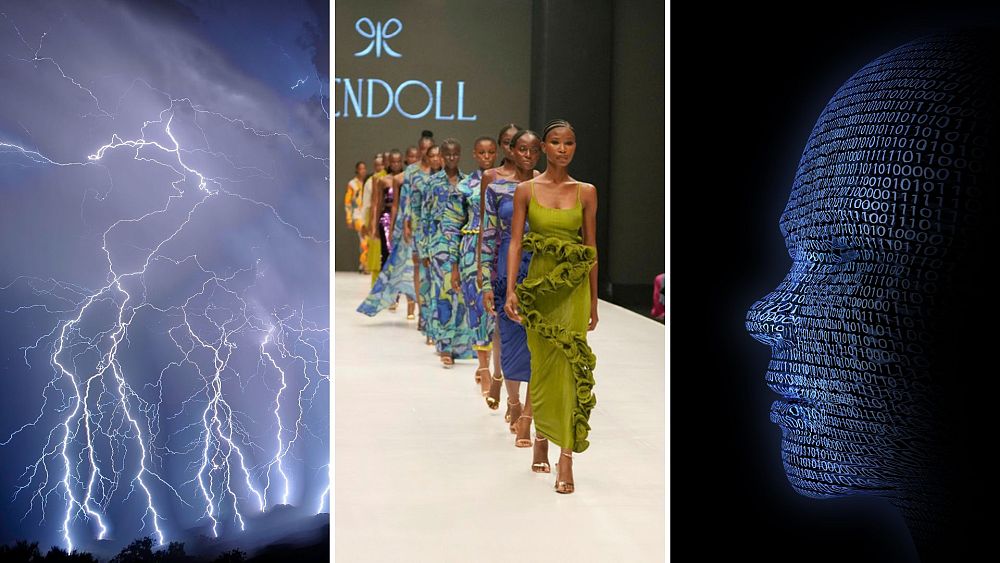Climate change and AI could have the biggest impact on the fashion sector.
The 2024 outlook for the fashion industry can be described with one word: “uncertain”. This is the word most often used by industry executives, who are completely divided over the prospects of their fields of expertise, according to the latest State of Fashion report by The Business of Fashion and McKinsey & Company.
There might not be a clear pathway as to what lies ahead, but the report lined up the ten most important things that are going to shape the next 12 months of the industry, based on global surveys of fashion executives and consumers.
Industry growth is projected to slow to 2 to 4%, helped by a rebound in global tourism and the opportunities presented by generative artificial intelligence.
Taking a closer look at the market
However, the global industry seemed resilient in recent years, in Europe and in the US, as consumers’ appetite to shop for fashion was diminishing in the second half of 2023, the industry had to face slowing sales and uneven performance.
Mainly due to fragile consumer confidence in key markets of the US, Europe and China, the report forecasts slower growth for the next year, with year-on-year retail sales between 2-4%. The luxury segment is expected to see the fastest growth, between 3% and 5%.
“The fashion industry once again demonstrated remarkable resilience in 2022. The luxury segment in particular propelled growth through price increases, partially offsetting the weaknesses of other segments,” said Senior Partner at McKinsey Achim Berg.
Meanwhile, foreign travel is expected to give a boost to fashion sales. Global travel is expected to jump 10% above pre-pandemic levels, and 80% of surveyed shoppers from the US, UK and China plan to shop for fashion while on holiday, so plenty of opportunities for brands to re-engage international shoppers in 2024.
More than half of the industry expects to raise prices while cost pressures are predicted to abate.
Influencer marketing — an industry currently worth more than $21 billion — is likely to shift, insights indicate that people increasingly prefer influencers with less polished but more authentic content, interest in celebrity status could be wiped away by relatable and authentic influencers who are fun.
Climate crisis’ $65 billion risk to the industry
After numerous extreme weather events in 2023, climate change presents the biggest short-term threat to the industry.
Climate change is expected to have an impact on the production of raw materials, supply chains as well as logistics.
The report states that by 2030, these extreme weather events could disrupt $65 billion (€59.81 billion) worth of apparel exports and threaten one million jobs in four major economies.
The fast-fashion industry, with brands such as Shein and Temu, may be particularly pressured as fashion supply chains are facing increased scrutiny amid incoming regulations and new sustainability rules in the European Union and the US.
While climate change is harder and harder to ignore, the report found that just 12% of executives cite sustainability as a principal opportunity for 2024.
How generative AI is coming into fashion
2023 was a breakout year for generative AI. It’s role in design and product development is in the forefront of fashion executives’ plans, 73% of them said generative artificial intelligence will be a top business priority in 2024.
On the other hand, high expectations could be withered by the fact that businesses still lack a significant knowledge and talent gap to tap into AI.
Only 28% of fashion executives have tried using it in creative processes and only 5% believe their employees currently have the necessary skills to untangle its full potential.
“The rise of Generative AI provides a creative crossroad for the fashion industry: We are already seeing multiple use cases emerging,” said Gemma D’Auria, Senior Partner and Global Leader of McKinsey’s Apparel, Fashion and Luxury Group. “To capture the value of this transformative technology in the coming year will require fashion players to look beyond automation and explore Gen AI’s potential to expand the work of human creatives.”
The 10 themes outlined in The State of Fashion 2024 report
- Fragmented future: In 2024, the global economic outlook will continue to be unsettled in major fashion markets, directly impacting consumer confidence and spending.
- Urgency in sustainability: It is time for fashion brands to address the climate risk and double down on efforts to reduce emissions, as climate events such as flooding and extreme heat may cost an estimated $65 billion to the industry by 2030.
- Global travel: In 2024, global travel volumes are projected to reach up to 110% of 2019 levels, and brands are warming up to new strategies to engage travelling customers.
- A new generation of influencers: Less-polished, but more entertaining and even quirky influencers are taking over as more than 40% of consumers prefer fashion influencers who are relatable and authentic.
- Outdoors reinvented: A recent boom in technical outdoor wear is likely to continue into 2024.
- Gen AI’s creative crossroad: Brands are expected to explore the potential for AI to augment the work of human creatives. 73% of fashion executives think gen AI is a 2024 priority for their companies, but only 5% believe they have the capabilities to fully leverage it.
- Fast Fashion’s power plays: Competition among fast-fashion brands will intensify in the year ahead, the success could lie in adapting to customer tastes and navigating new sustainability-related regulations.
- All eyes on brand: 71% of fashion executives plan to increase brand marketing spend in 2024.
- Sustainability: Business models will have to adapt to the regulatory changes ahead. 87% of fashion executives expect sustainability regulations to impact their businesses in 2024.
- Supply chain: As demand volatility is largely expected to impact supplier relationships in the next five years, businesses should consider bolstering strategic partnerships with manufacturers to avoid supply chain volatility.








;Resize=(1200,627)&impolicy=perceptual&quality=mediumHigh&hash=a3c2166e9c8e740877f5d0482da15d597537f130e228842430761791657e39a3)